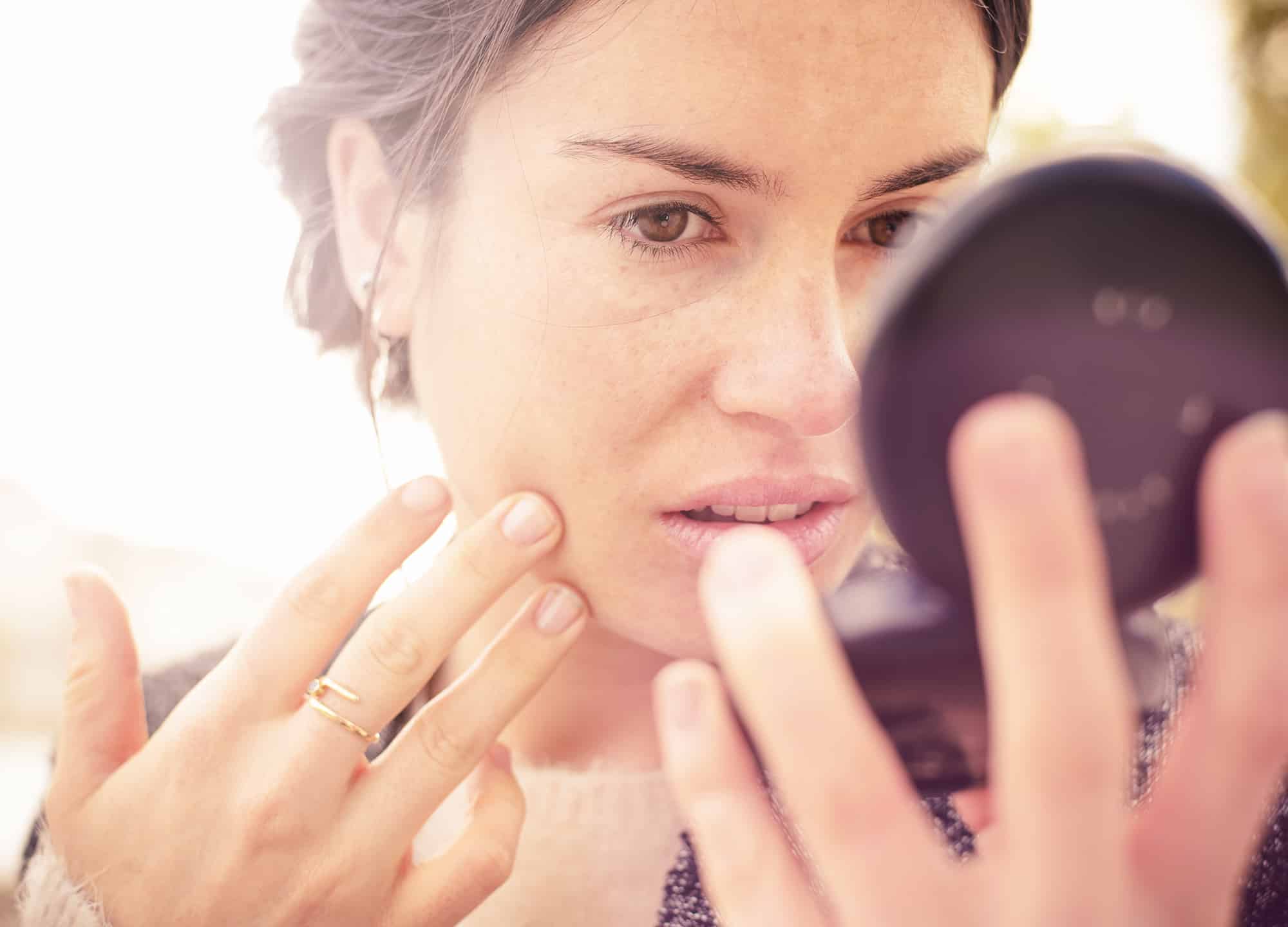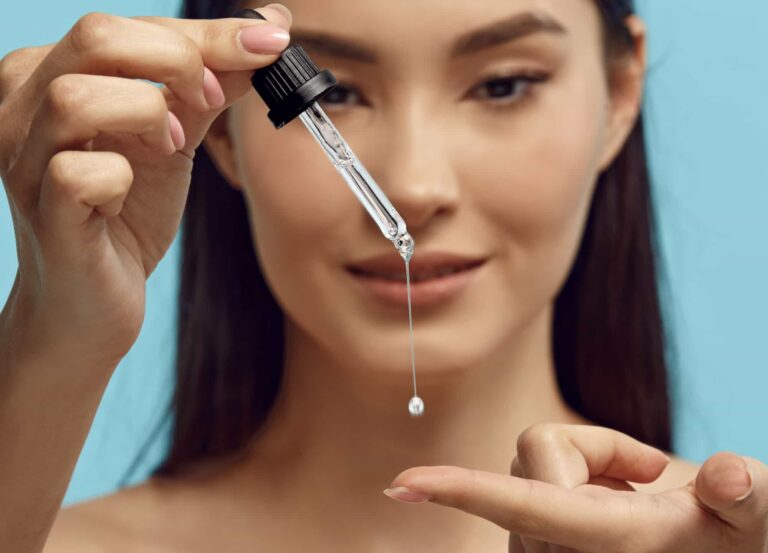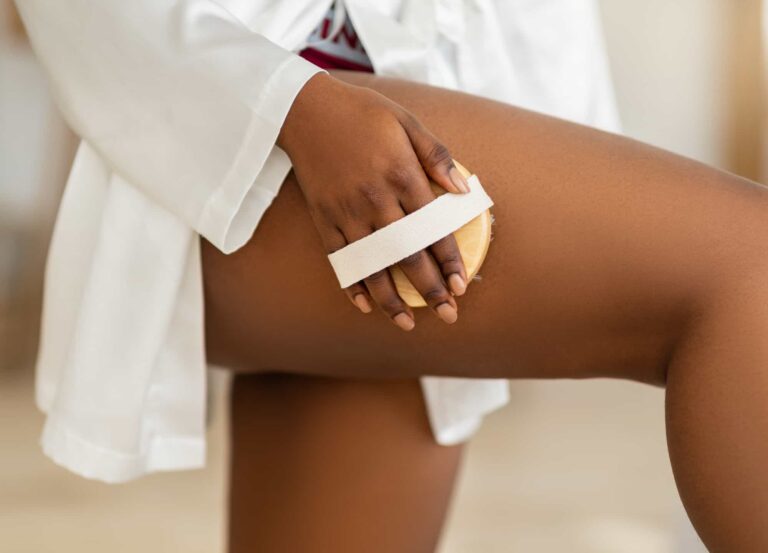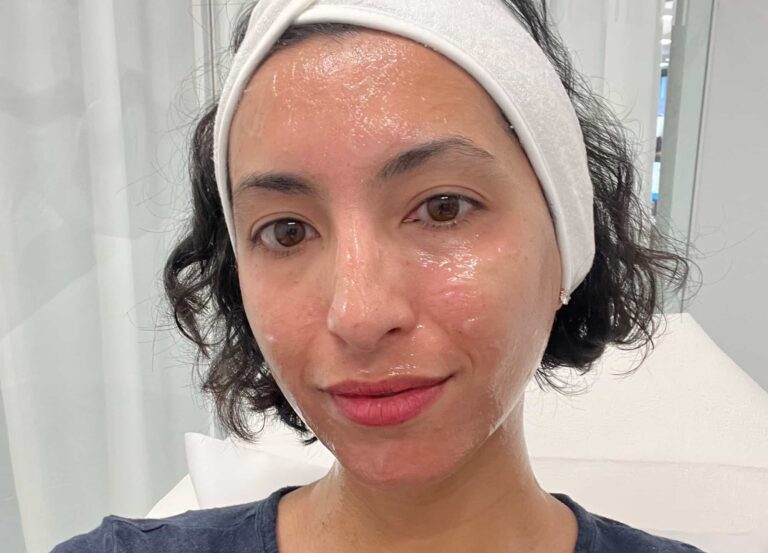Melasma is one of those skin issues that can easily fly under your radar, until you have it—and then the only question is “How do I make it go away?” And then “How do I make it go away faster?” It’s a hyperpigmentation concern, sometimes called the “mask of pregnancy,” a term that feels creepily old-fashioned plus overly specific. It’s not just pregnant women—or just women—who get melasma, and it doesn’t always look like a mask.
To find out what exactly it is, what causes it, and how best to treat it, we talked to board-certified dermatologists Dr. Jennifer Janiga, Dr. Amy Paul, and Dr. Lorrie Klein.
The short answer is, there’s no quick fix. But there are effective melasma treatments and steps to take so you don’t inadvertently make it worse.
Melasma & hyperpigmentation: what’s the difference?
To put it simply, melasma is just a type of hyperpigmentation—which is a term that refers to any area of the skin that’s darker than the rest. “Hyperpigmentation can be the result of sun damage, injury, acne, or even products or cosmetic procedures, like lasers and chemical peels,” explains Dr. Klein. “Anything that inflames the skin can cause hyperpigmentation, especially in patients with deep skin tones.”
But while all melasma is hyperpigmentation, not all hyperpigmentation is melasma. “Skin can hyperpigment from injuries, from the inside out—cystic acne, eczema,” explains Dr. Paul. Dermatologists usually use the words post-inflammatory hyperpigmentation (PIH), because people don’t just hyperpigment for no reason. It’s typically a reaction to things like the sun (resulting in sunspots) or inflammation from acne. “Melasma, on the other hand, is often hormone-dependent and much more common in women,” Dr. Paul clarifies.
Melasma also doesn’t present itself on the skin in the same way that PIH might. Instead of appearing like sunspots or general discoloration, melasma appears blotchy and often more widely spread across the face. “It makes a specific pattern on the face, on the upper lip—people think it looks like a mustache—the cheeks, and sometimes the forehead. It’s kind of angular and patchy,” explains Dr. Janiga.
Related: Hyperpigmentation: How 5 Skin Experts Treat Their Own Sun-Related Skin Damage
What causes melasma?
Unlike other common forms of pigmentation, melasma can be triggered by hormones, says Dr. Klein. It’s common for melasma to appear in women of childbearing age. “Probably, estrogen is the culprit,” continues Dr. Klein.
According to Dr. Janiga, melasma can also be genetic. “People come to see me who’ve never taken birth control pills, [have] never been pregnant, and haven’t had a lot of sun exposure—and yet they have melasma,” she says.
The best melasma treatments? Most are topical
Melasma is very difficult to treat, and there is no cure. “It’s a chronic [condition],” Dr. Janiga explains. “But there are topical treatments that work well for most people.” “For a small percentage of patients, even if they do everything there is to be done, their melasma won’t get better [due to genetics],” says Dr. Janiga. To ensure the best chance that your topical products will work, Dr. Janiga stresses that discipline and consistency are key.
Product tip #1: Start with a physical sunscreen containing zinc or titanium dioxide
This should go without saying, but sunscreen is one of the most important products in your skin-care routine—and it happens to be your best defense against melasma too. “Sunscreen is absolutely vital,” says Dr. Paul. “You have to be willing to use a good-quality physical blocking sunscreen with zinc or titanium dioxide all the time—no matter where you live in the world, no matter what your skin type is.” If you choose not to wear sunscreen after months of treating your melasma, Dr. Paul asserts that you’ll simply repigment the minute you go back into the sun unprotected. “I’ve had patients go on vacation and come back, and it’s like they never even tried to treat their melasma,” she explains. “Then it’s back to the beginning, which is really frustrating.”
However, Dr. Janiga points out that it’s not just direct sunlight that can exacerbate melasma, it’s all visible light (like the lights in your office or home). “I tell my patients they have to marry a zinc or titanium-dioxide sunscreen,” she says. “They have to love it. They have to be willing to wear it every day before I’ll even consider treating them [for melasma].” Aftercare is also important. “You definitely don’t want to go to Hawaii right [after treatment]” says Dr. Janiga. “Melasma has this interesting component to it where it’s not just sun-induced—there’s also something about the heat.”
Related: What Causes Darkening of Eyelids and Skin Around the Eyes, and How to Treat It
Product tip #2: Use skin-care products designed to treat hyperpigmentation
The next step in diminishing melasma is to use a lightening or brightening product. “I have my patients start with something hydroquinone-free, like SkinMedica Lytera 2.0 Pigment Correcting Serum [$154], twice a day, year-round,” says Dr. Janiga. I also have them use a retinoid if their skin can tolerate it, because it also has a pigment inhibitor in it.”
Pigment-inhibiting ingredients like tranexamic acid, which blocks pigment production, and hydroquinone are key for treating melasma. But for patients who choose to try hydroquinone, Dr. Paul cautions against any product that’s not properly prescribed. “You can find overly concentrated hydroquinone products on the black market and in compounding pharmacies sometimes,” she says. “And if you use a concentration above 4%, you risk another condition that makes your skin kind of a blue-gray.”
Best cosmetic treatments for melasma
(Certain) chemical peels
When it comes to chemical peels, melasma patients should proceed with caution. According to Brookline, Massachusetts, board-certified dermatologist Dr. Papri Sarkar, a peel that’s too strong or inappropriate for your skin type can make melasma worse. “In those cases, if there’s a lot of inflammation [post-peel], the skin may heal with dark spots, if you’re prone to them,” she explains. “Due to that, most practitioners start with a lower-strength peel and then slowly increase the strength as they see how your skin reacts.”
One peel that is considered a common treatment for melasma is the Cosmelan peel. It treats hyperpigmentation issues through a two-step depigmentation process that involves an application of the Cosmelan 1 peel at the doctor’s office (which needs to stay on for 8–12 hours) followed by consistent use of the Cosmelan 2 at-home maintenance cream. The system contains ingredients (like azelaic acid, kojic acid, phytic acid, and titanium dioxide) that suppress the body’s melanin production and increase cell turnover in order to minimize melanin that’s already become visible on the skin’s surface.
Dr. Janiga also recommends pigment-specific peels, like pyruvic acid, since studies have shown this ingredient is effective for specifically minimizing hyperpigmentation. Just be very careful of sun exposure for at least a month after, since skin will be more sensitive to UV rays than usual post-peel.
Related: Chemical Peels: Beyond the Basics
Lasers & IPL (with extreme caution)
Like chemical peels, the lasers that work for other hyperpigmentation don’t always work for melasma—and some can worsen the condition. “For melasma, I recommend some lasers, like Clear + Brilliant, intense pulsed light (IPL), and photofacials,” says Dr. Klein. “I don’t recommend Fraxel, because it creates more inflammation and sometimes can worsen the hyperpigmentation.”
“We don’t know everything about melasma,” adds Dr. Janiga. “Melasma can be deeper or more superficial, and we do not understand completely if the different depths [of melasma] will respond to laser differently.” Dr. Janiga adds that while some melasma patients can benefit from lasers, not everyone will see positive results. “I believe that 50% of melasma will worsen with IPL and certain lasers,” she continues. Because of this, Dr. Janiga recommends testing a small area with different treatments before administering them to a patient’s whole face.
Melasma dos & don’ts: three board-certified dermatologists agree
- Use a physical blocking sunscreen every day—rain or shine, indoors and out.
- Avoid sun exposure.
- Avoid hormone-secreting birth-control methods, if possible.
- Use pigment-inhibiting skin-care products.
- Avoid situations where you get very hot—for example, in a sauna.
- Avoid infrared heat.
- Avoid any cosmetic treatment that causes inflammation.
- Have a consultation with a board-certified dermatologist.











